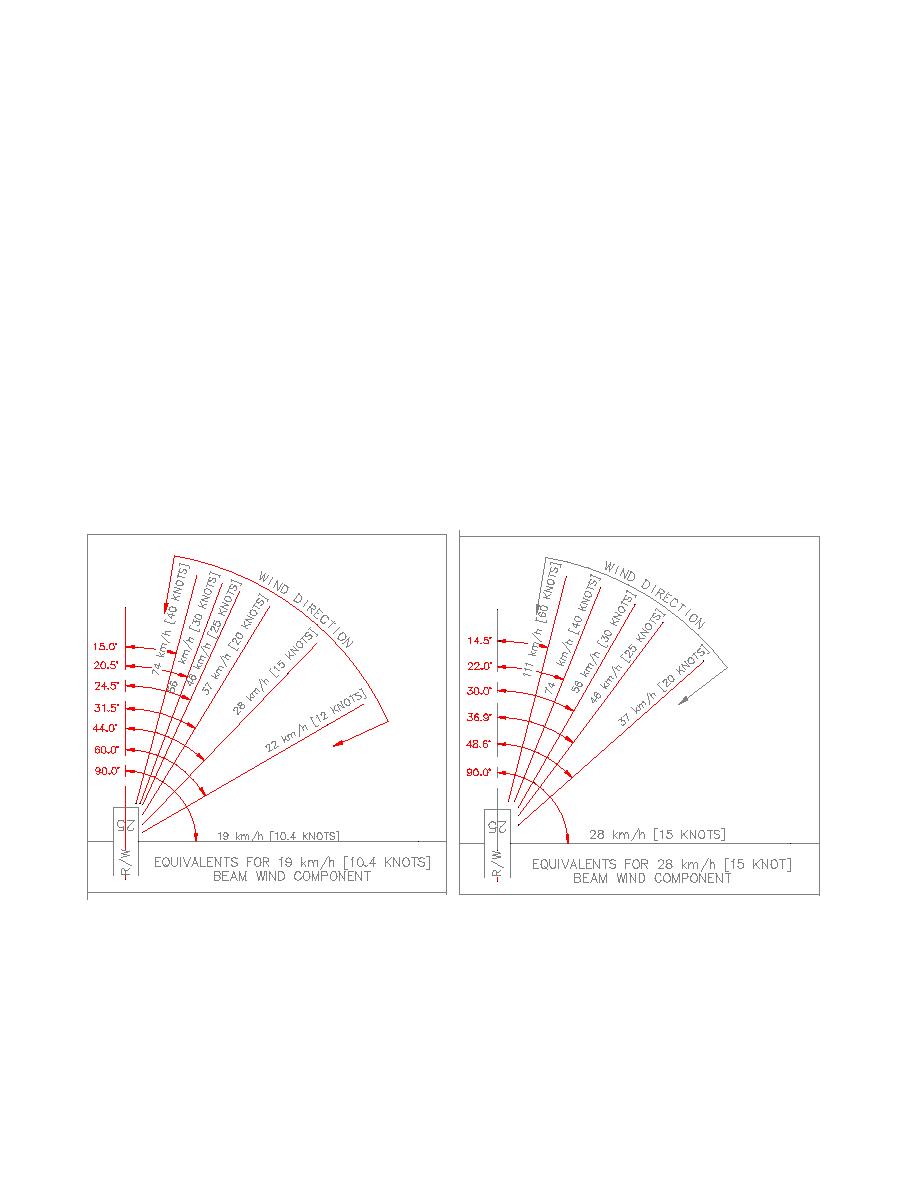
Attachment 5
throughout each of the individual segments. The larger the area or segment, the less accurate this
presumption.
A5.6.1. Primary Runways. Orient a primary runway for the maximum possible wind coverage. See
Figure A5.4 for the method of determining wind coverage.
A5.6.2. Secondary Runways. Where wind coverage of the primary runway is less than 95 percent, or
in the case of some localities where during periods of restricted visibility the wind is from a direction
other than the direction of the primary runway, a secondary (crosswind) runway is required. Normally,
secondary runways will not be planned without prior authorization from Naval Air Systems Command.
The secondary runway will be oriented so that the angle between the primary and secondary runway
centerline is as near 90 degrees as is feasible, considering local site conditions and the need to provide
maximum crosswind coverage.
A5.6.3. Maximum Allowable Crosswind Components (Navy Only). Select these components
according to type of aircraft, as follows: (1) tricycle gear aircraft, 28.0 kilometers per hour [15.0
knots];and (2) conventional gear aircraft, 19.5 kilometers per hour [10.5 knots].
A5.6.4. Allowable Variations of Wind Direction. See Figure A5.5 for allowable wind directions.
Figure A5.5. Allowable Wind Variation for 19 Kilometer-per-Hour (10.4 Knot) and 28 Kilometer-
per-Hour (15 Knot) Beam Wind Components.
A5-6



 Previous Page
Previous Page
